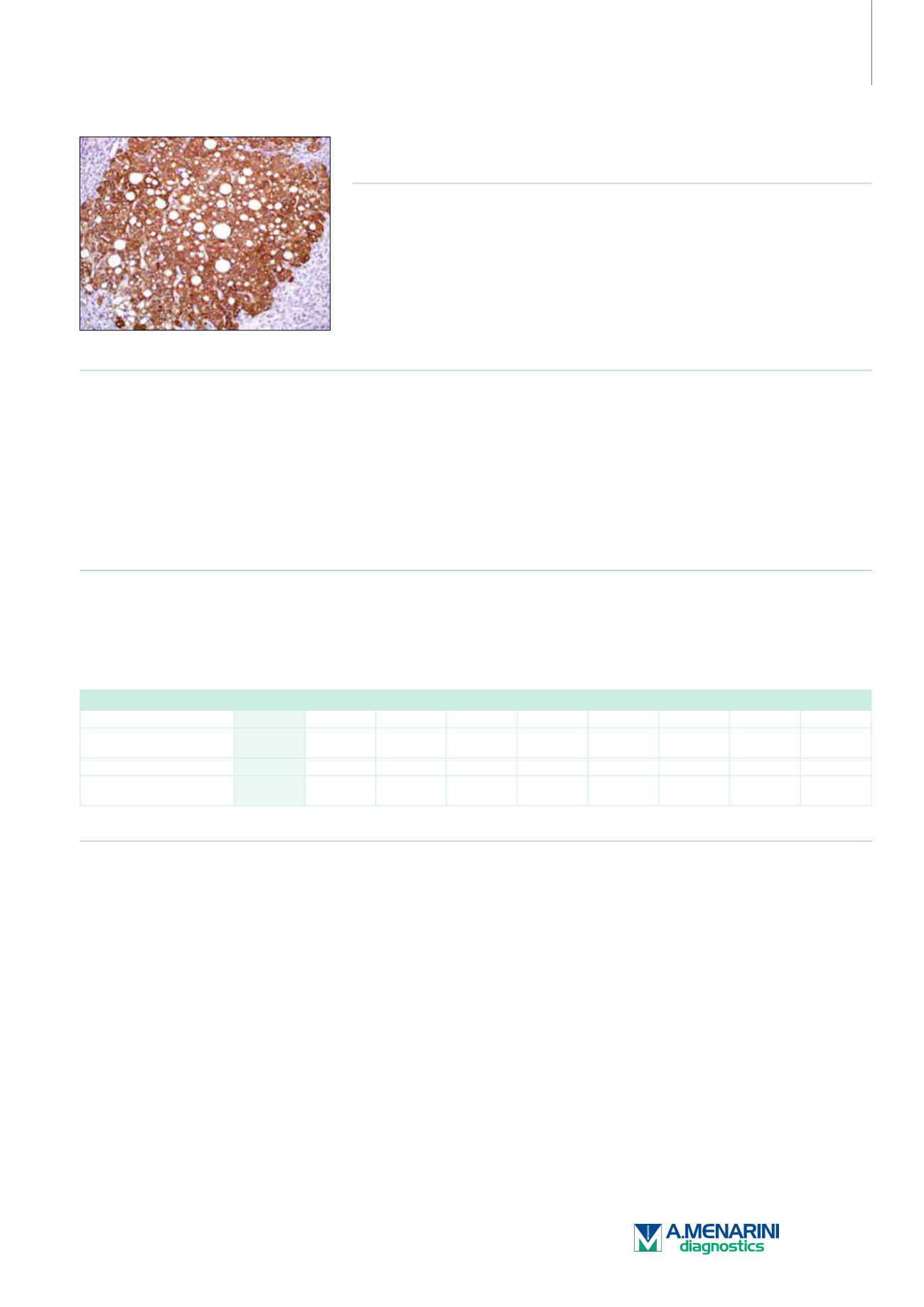
Advanced Solutions
for Advanced Pathology
Hepatocyte Specific Antigen (Hep Par-1) (OCH1E5)
Mouse Monoclonal Antibody
Cat. No. Description
Volume
45147 IMPATH Hepatocyte Specific Antigen RTU M (OCH1E5) 50 Tests
44306 Hepatocyte Specific Antigen RTU M (OCH1E5)
7 ml Ready To Use
44634 Hepatocyte Specific Antigen 0,1 M (OCH1E5)
100 µl liquid Concentrated
44635 Hepatocyte Specific Antigen 1 M (OCH1E5)
1 ml liquid Concentrated
Product Specifications
Designation
IVD
Reactivity
Paraffin
Visualization
Cytoplasmic
Control
Liver
Stability
Up to 36 mo. at 2-8°C
Isotype
IgG
1
/k
Manual Protocol*
• Pretreatment: Heat Induced Epitope
Retrieval (HIER)
• Primary Antibody Incubation Time:
10-30min @ 25-37°C
• 2-step polymer detection
*Please refer to product insert for complete protocol.
ImPath Protocol*
• Dewax: Dewax Solution 2 (DS2)
• Pretreatment: Retrieval Solution pH 9.0
(TR1) 32min @ 98-103°C
• Primary Antibody Incubation Time:
10-90min @ 25-37°C
• HRP Polymer (Universal) or AP Polymer
(Universal) for 12 min
*Please refer to product insert for complete protocol.
Product Description
Anti-hepatocyte specific antigen, also known as anti-Hep-Par1, recognizes both benign and malignant liver-derived tissues including such tumors
as hepatoblastoma, hepatocellular carcinoma, and hepatic adenoma. It recognizes both normal adult and fetal liver tissue. The typical pattern is
a granular cytoplasmic staining. This antibody is useful in differentiating hepatocellular carcinomas with adenoid features from adenocarcinomas,
either primary in the liver or metastatic lesions to the liver. In labeling hepatoblastoma, it is useful in differentiating this entity from other small
round cell tumors.
Liver: Malignant vs. Benign
Hep-Par1 Glypican-3 CD34
p53
AFP
A1AT
pCEA
mCEA
TTF-1
Hepatocellular Carcinoma
+
+
+
+
-/+
-/+
+
-
+
Cytoplasmic
Hepatoblastoma
+
+
-
+
+
+
+
-
-
Benign Liver Nodules
+
-
-
-
-
+/-
-
-
+
Cytoplasmic
Reference
1. Minervini MI, et al. Mod Pathol. 1997; 10(7):686-692.
2. Fasano M, et al. Mod Pathol. 1998; 11(10):934-938.
3. Tsui WMS, et al. Am J Surg Pathol. 1999; 23(1):34-48.
4. Wieczorek T, et al. Am J Clin Pathol. 2002 Dec; 118(6):911-21.
5. Chu PG, et al. Am J Surg Pathol. 2002 Aug; 26(8):978-88.
6. Maitra A, et al. Am J Clin Pathol. 2001 May; 115(5):689-94.
137


